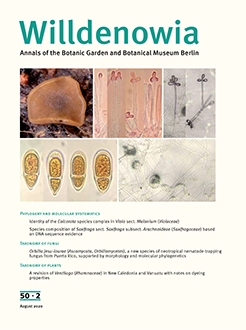We present a taxonomic revision for Cyclodium, a neotropical fern genus that is most diverse in the Amazon lowlands, especially in the Guianas and Venezuela, but also extending to Central America, the western Andes and southeastern Brazil. The genus belongs to the Dryopteridaceae and is distinguished from other genera in this family by its dimorphic fronds and peltate indusia. We recognize 13 species of Cyclodium, for which we provide morphological descriptions, distribution maps, an identification key, illustrations and taxonomic comments. Cyclodium pubescens is described as new to science, C. meniscioides var. paludosum and C. meniscioides var. rigidissimum are synonymized under C. meniscioides, and C. heterodon var. abbreviatum is synonymized under C. heterodon. Lectotypes are designated for Aspidium confertum, A. guianense, C. rigidissimum, Dryopteris calophylla and Polystichum inerme. We also provide an assessment on conservation status for each species following IUCN categories and criteria.
Citation: Bohn A., Matos F. B. & Labiak P. H. 2020: Taxonomy, distribution and conservation status of the fern genus Cyclodium (Dryopteridaceae). – Willdenowia 50: 279–304. doi: https://doi.org/10.3372/wi.50.50213
Version of record first published online on 25 June 2020 ahead of inclusion in August 2020 issue.





